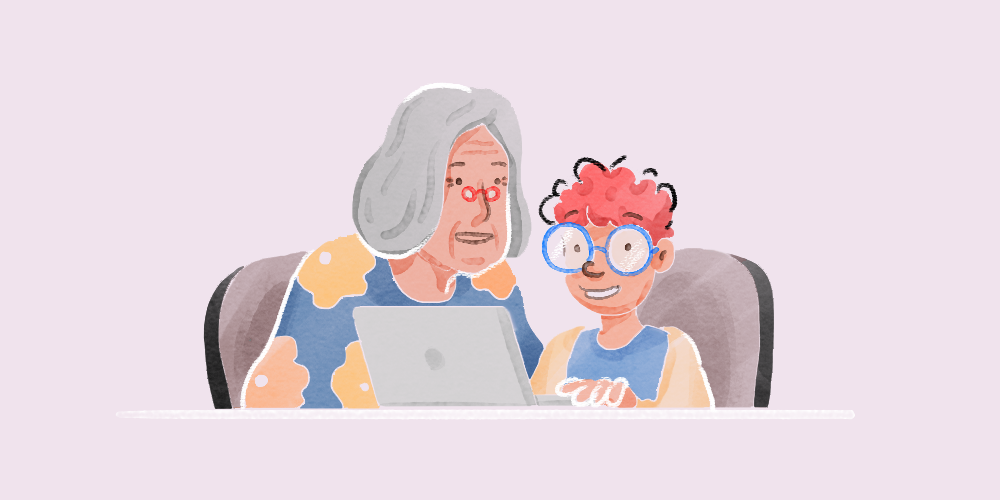Why it’s time to focus on the oldest generation of workers

Gen Z this, Gen Z that. How this youngest generation enters the workforce has been a popular talking point for some time. But that kind of over-attention means older workers often get forgotten.
That could spell trouble for employers that leave their baby boomer workers in the dust. These folks, currently aged between 57 and 75 years old, are staying in the workforce longer than people ever have before, making it critical that leaders don’t neglect their needs. By 2030, a whopping 150 million jobs will shift to workers over the age of 55, according to a new global study from management consultancy Bain & Company. It predicts that older and experienced workers will make up more than a quarter of the workforce by 2031.
And it’s happening globally. In Japan, almost 40% of workers are over 55 years old. Europe and the U.S. aren’t far behind with anywhere from 25% to 30%. A part of that is the “unretirement” trend where retirees rejoin the labor force, joined by increasing retirement ages in general.
“Look at our population and compare it to the way it was when we had the concept of retiring at 65,” said Paula Allen, global leader and senior vp of research and total well-being at TELUS Health. “When that age was put in everyone’s head, life expectancy was a lot shorter. Most people who are working right now, can expect to live into their late 80s or 90s.”
According to an AARP global employer survey, only 4% of firms were committed to programs that help integrate older workers or support a multigenerational workforce. That’s why it’s time for leaders to step up and think about the needs of these workers in a new way. That ranges from workplace accommodations like extra time off to spend with grandchildren, and programs to learn new technology.
Additional health benefits
Employers can start by ensuring their health benefits fully cater to older workers who may find that body functions such as hearing, start to change.
The World Health Organization puts the number of adults who suffer from a disabling level of hearing loss at 430 million, but there’s over a billion globally that are affected by mild hearing loss, stressed Amanda Philpott co-founded eargym, a hearing training app that is offered as an employer benefit. “When we look at employers, it’s not just the traditional industries like construction or transport, it’s also offices. They can be noisy and people are wearing headphones to drown it out. We need to be more aware of what a noisy workplace can look like,” she added.
Companies need to ensure their healthcare options cater to the fact that workers may need to visit the doctor more frequently as they get older. An obvious example is offering menopause benefits, a woefully underserved health benefit.
Most (79%) of 1,000 U.S. workers experiencing perimenopause or menopause said it makes work challenging, more so than other common life stages including starting a new job or family, according to a survey from Carrot Fertility, a global fertility healthcare and family-forming benefits provider.
These additional healthcare benefits could be paired with more flexibility in time off to go to these appointments as well.
“As humans get older, our bodies don’t continue to work the way they did before,” said Ashlee Brennan, vp of leave compliance at AbsenceSoft. “We’re more likely to break bones, more likely to have continued health concerns, which creep up and affect the workplace. Maybe someone was able to manage their diabetes for 20 to 30 years, but as they get older, it’s becoming more challenging and starting to interrupt their work.”
And for those who keep themselves physically fit, it’s worth considering gym memberships that include nutrition plans, to help support their goals.
Flexible work schedules
Flexible work is highly prized regardless of generation, but people with decades left on their career trajectory may already be – or soon will be – grandparents. The age-old image of grandparents being retired and available to take care of grandchildren is no longer the norm.
Providing a flexible schedule allows these individuals to spend more time with their grandchildren and assist with child care. Some companies are already doing this, calling it “grandparent leave” where employees get extra paid leave per year to spend with their grandchildren.
These folks also are likely caregivers for their own aging parents. “They might need to take caregiving leave to take mom to dialysis or whatever appointments. The aging workforce is still taking care of their parents,” said Brennan.
And these policies benefit everyone. “Things like flexibility and teleworking, your 30-year-olds are looking for that as well,” said Allen. “The whole idea of a flexible workplace, one that supports work-life balance, allows people to have sabbaticals, that is more relevant to the full population.”
Breaking stereotypes
Just as having a lack of women, diverse or young workers can impact a company’s corporate image, so can a dearth of older workers. And that can be plain to see on any company website’s team pages. “When you have pictures of who works there, what are those pictures like and what do they reflect?” said Allen. “That tells the message of what your culture includes and doesn’t include. The absence of anyone with a little bit of gray sends a message.”
It’s a small thing, but goes far in whether or not employers are being thoughtful about this generation.
But it goes beyond that. Ageism can be prevalent in job interviews, whether it’s conscious or not. Are you asking questions during the interview process to ensure you’re not making presumptions about age, and in doing so missing out on the person who is actually the best pick for the role? And if you’re not being inclusive, you’re walking a fine line of being discriminatory.
One of the biggest stereotypes is that the older generation can’t get a hold of technology. It’s a harmful one, because it automatically leaves these workers out of conversations around new technology.
“I was aware of a case where one significantly older worker than the rest was purposefully not trained on the assumption that the worker wouldn’t want to, would be resistant, or couldn’t learn the new technology,” said Linda Ashar, associate professor at the Wallace E. Boston School of Business at American Public University System. “Now, that’s a possibility, but that worker was not given the opportunity to succeed.”
Benefits of retaining the older generation
There are many advantages that come with having older workers. For example, stability. Older workers usually seek long-term employment, which reduces turnover rates. It can save the company recruitment and training costs associated with frequent turnover. Besides this, older workers can serve as mentors and leaders, passing on their knowledge and expertise to younger employees.
“If you need to bring someone in that’s new, let them work together,” said Ashar. “That’s how you do it. It’s encouraging them to work together, rather than giving that older worker the idea that they’re being pushed out and mentoring their replacement.”
Older workers are also more likely to have established relationships with clients and customers, which can be invaluable for maintaining and expanding business connections. “If you have any kind of homogeneity, you end up in a rut. Older workers, in particular, are bringing experience and perspectives that have been honed over a long period of time,” added Allen.
A diverse workforce, including employees of different ages, backgrounds, and perspectives, leads to more creative and well-rounded solutions to business challenges, which in turn helps the bottom line.
That’s why Ashar says we need to ditch the stereotypes that you can’t teach an old dog new tricks and that older workers are only thinking about retirement.
“What about that person changed when they turned 55?,” said Ashar. “They still know everything they do, still have the education they had, but now they are told to go sit on their porch. Most people really don’t want to go home and sit on their porch. The idea of retirement is a nice concept for those who want that, but many people still want to be productive and contribute. They like what they’re doing.”

